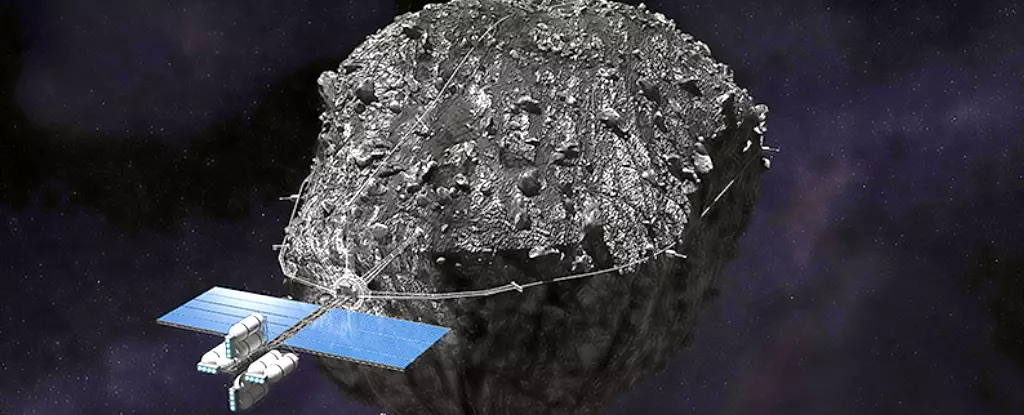Asteroid mining is an exciting concept that has captured the imagination of space enthusiasts and industry leaders alike. The media often presents grandiose estimates concerning the potential worth of these celestial bodies, with figures soaring into the quintillions. For instance, the valuation of Psyche, a metallic asteroid in the asteroid belt, has been sensationally calculated to be around $10 quadrillion. But how valid are these figures? What do they really imply for the future of space resource extraction? A comprehensive investigation recently undertaken sheds light on the actual economic viability of asteroid mining and what these endeavors may entail.
Asteroid mining is far from straightforward, and recent research, funded by the asteroid mining startup Astroforge and conducted by a Colorado School of Mines professor, provides valuable insights into the kinds of metals present in asteroids. The study differentiates between metals with significant economic value and those that hold less worth in a terrestrial context. Predominantly, only platinum-group metals (PGMs)—which enjoy high demand in various technological applications including medical devices and catalytic converters—rated as valuable enough for retrieval and transportation back to Earth.
Conversely, metals like iron, aluminum, and magnesium—while plentiful in space and potentially essential for construction projects such as space stations—may not be profitable to transport to Earth due to their relatively low market value. This reliance on local construction analytics underlines a fundamental barrier in determining the necessity and worth of mining endeavors in outer space.
Costs associated with transporting materials back from space exacerbate the uncertainties surrounding asteroid mining profitability. Current estimates place the price of sending materials to Earth at a staggering $10,000 per kilogram, a figure significantly eclipsing the value of common metals like iron, which is priced at roughly $100 per kilogram. Despite this disparity, PGMs display high market values on Earth, with substances like rhodium sometimes going for upwards of $500,000 per kilogram.
However, the interaction of supply, demand, and potential space-sourced construction could yield a complex marketplace. The unclear demand for space-derived materials stymies efforts to assign a precise economic value, and the interplay of these factors leads to an intriguing yet ambiguous outlook for asteroid mining enterprises.
Much of our understanding of asteroids comes from the study of meteorites—essentially remnant asteroid material that has landed on Earth. As it turns out, initial assumptions regarding the homogeneity and metal content of asteroids might have been overly optimistic. Recent evidence suggests asteroids expected to have high metallic concentrations, such as Psyche, may instead differ significantly from their projected profiles.
This discrepancy raises questions regarding the feasibility of extracting valuable materials. For example, while PGM concentrations might not meet prior calculations, they can still surpass their terrestrial counterparts considerably, particularly in rare instances of finding refractory metal nuggets (RMNs) on specific asteroid types. These findings affirm that some asteroids may be worth exploring further despite their initial valuation challenges.
The practicalities of processing extracted metals also impose additional hurdles on mining operations in space. While estimates reaffirm the prospective abundance of metals such as iron, the challenge remains in manipulating these metals from their oxidized states. High-energy methods, including molten regolith electrolysis, point to the need for substantial power sources, which, in turn, require the very materials that current mining efforts aim to extract.
This ever-present chicken-and-egg dilemma stifles operational advancements and necessitates a robust infrastructure requiring previously mined materials for further processing. Without established technology or demand, these cycles create further barriers for entrepreneurial ventures exploring the burgeoning field of asteroid mining.
The ambitious aspirations of companies like Astroforge represent not only a leap in technology but signify faith in potential collaborations between academics and the industry to explore space resources effectively. Their upcoming mission will serve to gather crucial data on the compositions of near-Earth asteroids and bring some clarity to the mining debate, helping lay the groundwork for future endeavors.
The journey towards successful asteroid mining is fraught with complications, and the dazzling figures often touted may mask a more complex reality. By closely analyzing the true economic potential and technological requirements involved, we may begin to challenge our previous notions and build a viable framework for future space exploration and resource extraction. The quest to mine asteroids offers a glimpse into humanity’s possibilities beyond Earth, yet it also illustrates the strenuous path researchers and entrepreneurs must navigate.

